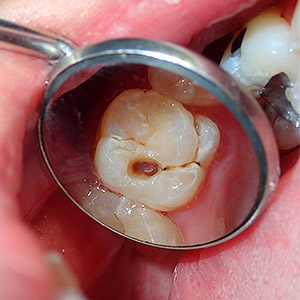
Until recently, the standard treatment for tooth decay remained essentially the same for nearly a century: Remove any decayed structure, then prepare and fill the cavity. But that singular protocol has begun to change recently.
Although "drilling and filling" saves teeth, it doesn't fully address the causes of decay. In response, dentists have broadened their approach to the disease—the focus now is on an individual patient's particular set of risk factors for decay and how to reduce those.
At the heart of this new approach is a better understanding of oral bacteria, the true cause of decay. Bacteria produce acid, which can erode tooth enamel and create a gateway into the tooth for decay to advance. We therefore want to lower those risk factors that may lead to bacterial growth and elevated acidity.
One of our major objectives in this newer approach is to reduce plaque, a thin film of food particles used by bacteria for food and habitation. Removing plaque, principally through better oral hygiene, in turn reduces decay-causing bacteria.
Plaque isn't the only mechanism for bacterial growth and acidity. Appliances like dentures or retainers accumulate bacteria if not regularly cleaned. Reduced saliva flow, often due to certain medications or smoking, limits this fluid's ability to buffer acid and acid reflux or acidic beverages like sodas, sports or energy drinks can disrupt the mouth's normal pH and increase the risk for enamel erosion.
Our aim, then, is to develop a long-term strategy based on the patient's individual set of oral disease risk factors. To determine those, we'll need to examine their medical history (including family), current health status and lifestyle habits. From there, we can create a specific plan targeting the identified risk factors for decay.
Some of the elements of such a strategy might include:
- Daily brushing and flossing, along with regular dental cleanings;
- Fluoride dental products or treatments to strengthen enamel;
- Changes in diet and excess snacking, and ceasing from any tobacco use;
- Cleaning and maintaining appliances, as well as monitoring past dental work.
Improving the mouth environment by limiting the presence of oral bacteria and acid can reduce the occurrence of tooth decay and the extent of treatment that might be needed. It's a more nuanced approach that can improve dental health.
If you would like more information on tooth decay prevention and treatment, please contact us or schedule an appointment for a consultation. You can also learn more about this topic by reading the Dear Doctor magazine article “Tooth Decay: How to Assess Your Risk.”
